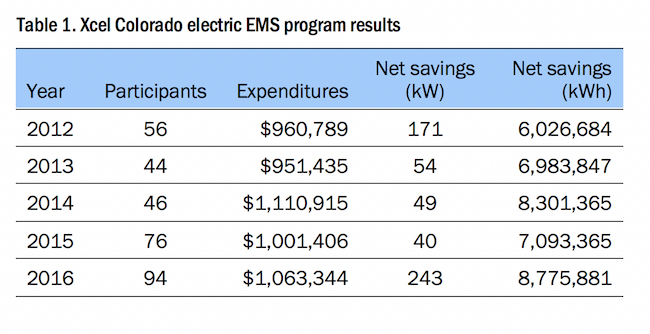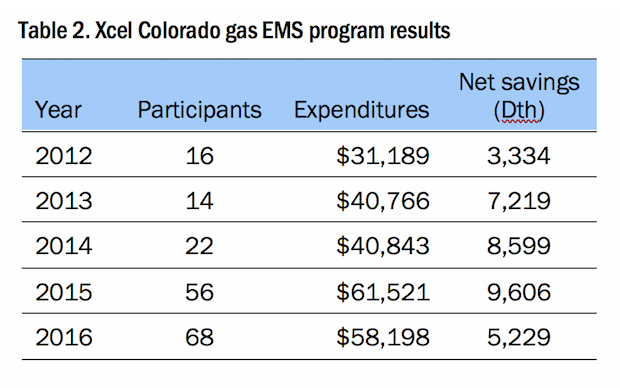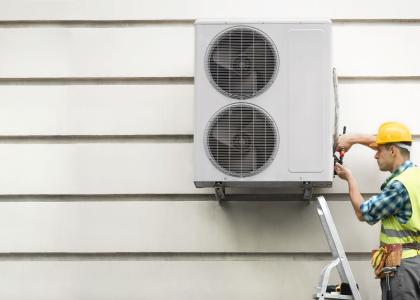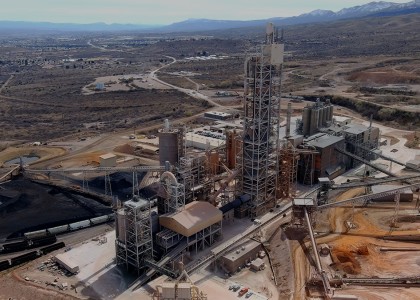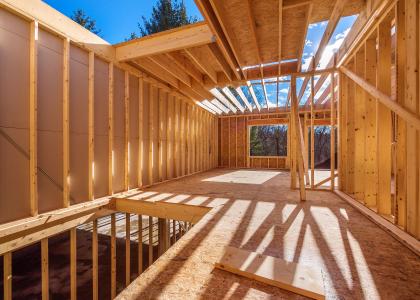Why Intelligent Efficiency Is Important
Intelligent efficiency is the incremental energy savings made possible by using information and communication technologies. Applications range from Internet-connected building automation systems to production processes that employ machine learning to optimize material and energy. Energy efficiency programs are just beginning to include intelligent efficiency measures in their program portfolios. These initial efforts, while incremental, are indicative of more programs and activity to come. As the efficiency of some common devices such as lightbulbs and electric motors approach their theoretical limits, additional energy savings will be possible primarily through superior control of devices and systems. An efficient pump operated poorly will consume more energy than an inefficient one operated optimally. The same is true with buildings and entire production processes. Superior operation requires superior control, based on analyzing historical trends and comparing them with current operating conditions. Commercial building operators are utilizing advanced building automation systems (BAS) to minimize building energy expenses, and manufacturing facility managers are using energy management information systems (EMIS) to collect and analyze production data to inform their decision making. Substantial savings are also possible from less-sophisticated controls serving smaller buildings.
Many energy consumers are only beginning to learn of these promising technologies. Because the deployment of advanced systems is in its infancy, energy efficiency programs have many opportunities to accelerate adoption of intelligent efficiency with technical and financial assistance. Such technologies will help customers save energy and help programs achieve their energy savings goals.
Using Intelligent Efficiency in Energy Efficiency Programs
Intelligent efficiency can be an energy-saving measure, a set of tools to automate program administration, or a suite of technologies to automate the measurement of project and program energy savings and impacts. All of these uses can expand the scope and scale of energy efficiency programs and thereby increase energy savings.
This toolkit is intended for utilities, efficiency program operators, and other efficiency stakeholders. It contains information and examples of how some programs are incorporating applications of intelligent efficiency into their program offerings. Case studies demonstrate how two different program models provide incentives for investments in energy management and other control systems: (1) fixed incentives or incentives covering a specified share of the installed cost of prescribed equipment; and (2) custom incentives based on volumetric savings. We also examine an emerging use of intelligent efficiency in which a commercial building operator works with a vendor to network residential learning thermostats instead of investing in a conventional building automation system.
Many program administrators are also using intelligent efficiency in their customer engagement, project tracking, and program administration. Some are even incorporating it into their continuous improvement programs, such as strategic energy management (SEM) and ISO 50001, that train workers to identify and quantify opportunities and justify solutions. We explain the benefits and current limitations of such applications.
This toolkit concludes with a list of other resources —reports and information on collaborative efforts focused on increasing awareness and deployment of intelligent efficiency.
Intelligent Efficiency as an Energy-Saving Measure
Programs most commonly use intelligent efficiency as an energy-saving measure. They provide financial and technical assistance through prescriptive and/or custom programs. In the former, incentives are fixed, often as a cost share of eligible investments. In the second, the volume of energy savings determines the size of the incentive. Prescriptive programs may deem the savings based on historical savings from the type of equipment installed or track and record savings over the period of program participation.
Technologies
Commercial buildings represent 36% of all US electricity use and 18% of US energy use and carbon dioxide emissions (EIA 2015, EIA 2017). While the energy intensity of buildings has decreased over the past decade, total electricity consumption has steadily climbed. Heating, ventilation, and air conditioning (HVAC) systems and lighting account for 50% of electricity consumption in commercial buildings (King and Perry 2017).
Commercial and industrial (C&I) buildings usually have complex HVAC systems. Traditionally, BAS have connected various end-uses and enabled building operators to monitor and control the whole building from a single point. Due to their complexity, BAS systems tend to be expensive, making it difficult for small and medium sized buildings to afford these systems.
An EMIS is a software tool that collects, stores, analyzes, and displays a facility’s energy consumption data. It can be the first step a company takes when adopting intelligent efficiency. EMIS are also compatible with many continuous improvement practices such as SEM or ISO50001, and they can help automate the data collection and analysis required by such practices. An organization can connect an EMIS directly to equipment or to building automation or production management systems that control facility equipment (NEEA 2015).
Examples of Applications of Intelligent Efficiency in Programs
Smart or learning thermostats have been among the earliest applications. These residential heating and air conditioning control devices allow remote control, often have access to machine learning algorithms, and save energy by operating equipment less frequently and at lower levels.
The incorporation of learning thermostats into programs has taken many forms. These include bring your own thermostat (BYOT) programs that provide incentives to customers for participating in a program, direct installation of free thermostats, thermostat buy-downs, bonus incentives, and special rates through retail providers and home security contractors (E Source 2015). These programs have produced energy savings of approximately 10% of total gas use (13% of the heating load) and approximately 4% of total electric use (15% of the cooling load) for residential customers (E Source 2015).
Commercial and industrial programs have also started providing incentives for applications of intelligent efficiency such as BAS and EMIS. Some programs offer prescriptive incentives based on a percentage of installation costs, while others offer custom incentives based on net energy savings.
Prescriptive Program Approach
The Internet of Things (IoT), combined with cloud and edge computing, are enabling BAS and EMIS to collect, analyze, and present real-time energy data on any device connected to the network and equipped with appropriate sensors or meters (Navigant 2017, NYSERDA 2017a). A subset of BAS are real time energy management (RTEM) systems, which continuously monitor and use machine learning to improve building performance (Rogers 2017). These systems allow building operators to track building performance, identify equipment faults, and create simulations of equipment performance to identify optimal operating conditions (Rogers and Junga 2017).
Energy management systems represent a large opportunity for efficiency programs to secure energy savings from small- and medium-size buildings. Commercial buildings of 100,000 square feet or smaller represent 98% of US commercial buildings, but typically do not have automated control systems (King and Perry 2017). Efficiency programs can encourage the uptake of cloud-based energy management hardware and software systems by reducing high upfront costs through prescriptive rebates and cost sharing. For example, the New York State Energy Research and Development Authority (NYSERDA) offers a program that uses prescriptive rebates to promote RTEM adoption.
NYSERDA Real Time Energy Management
In 2016, NYSERDA began its RTEM Program to accelerate the market adoption of RTEM systems and services. Commercial, industrial, and multifamily building owners and managers can apply to receive funding and support for their projects. Once NYSERDA approves a project, it will cover up to 30% of the installation cost, 30% of the service fees for the first three years, and 20% of the service fees for another two years (NYSERDA 2017b).
NSYERDA designed the program to guarantee savings. Building owners and managers must choose from NYSERDA’s RTEM Qualified Vendor list. This allows NSYERDA to ensure program participants are purchasing quality products and services. Not only does this help ensure savings, but also provides insights into best practices for installation and use of RTEM systems. The program also requires a five-year service agreement with a stipulation that the building operator and RTEM service provider continuously use the system and report savings back to NYSERDA (NYSERDA 2017b).
NYSERDA will report the savings from the RTEM program beginning in 2018. Past research has shown that RTEM can reduce energy consumption by 5-15% for commercial buildings (Perry and King 2017). Savings vary depending on the building design, systems installed, and operation of the RTEM. To increase the likelihood of and persistence of savings, program developers should design efficiency programs to encourage not only the installation of RTEM but also their proper operation.
Efficiency Nova Scotia EMIS Program
Efficiency Nova Scotia, a Canadian electricity efficiency utility, has offered an EMIS-based program that targets industrial and institutional facilities since 2012. The program provides financial incentives to cover up to 50% of the cost to develop, design, and implement an EMIS. Program participants complete three steps: EMIS audit, EMIS Implementation Plan, and implementation. To date, seven organizations have participated in the program.
The program creates a management infrastructure and provides EMIS training to operators and management. Operators learn how to determine key performance indicators and enter relevant product data into the EMIS, which gives them and management the information for optimizing facility energy use. After implementation, participants benefit from a customized 12-month support plan.
After installation and worker training, the EMIS translates various data streams into information that operators and management can use to develop and carry out energy efficiency plans. Plant personnel can track the performance of each energy efficiency measure using the data automatically collected by or entered into the EMIS (Henwood and Bassett 2015, Econoler 2017).
Cost effectiveness in the first couple of years was $0.03/kWh saved (Henwood and Bassett 2015). Efficiency Nova Scotia and program participants consider the EMIS program a success. In program year 2016, four of the seven participants reported savings totaling 2.0 GWh. When combined with savings persisting from prior years, savings totaled 4.7 GWh (Econoler 2017).
Hydro Quebec, Efficiency New Brunswick, NB Power, and Focus on Energy Wisconsin launched similar EMIS-based programs in recent years and will report program savings in the next year or two. The success of these EMIS-based programs is leading to development of similar programs in San Francisco, California, Portland, Oregon, and other cities.
Custom program approach
Many programs targeting larger customers tie the amount of an incentive to the amount of energy saved. This enables program administrators to fund a greater variety of projects while still maintaining cost effectiveness. The utility and customer may negotiate the amount of the incentive or it may be set at a fixed amount per unit of energy saved (kilowatt-hours of electricity or therms of natural gas). We often refer to the latter as a standard offer.
Xcel Energy’s Energy Management System Program
Xcel Colorado‘s EMS program offers incentives proportional to the volume of energy saved. It is a custom energy efficiency program available to all commercial and industrial customers, but is largely targeted at commercial customers with a demand of 500 kW or greater. Xcel markets the program through trade allies, as well as directly to customers through account managers. In 2015, Xcel expanded the program to include software programs that allow customers to see and analyze real-time energy data. The program covers the entire range of EMS ranging from simple tracking and fault-detection systems to RTEM systems that enable operators to visualize data and identify low- or no-cost behavioral measures customers can take to reduce their energy usage (Xcel 2015b).
Project Examples
Office Building
Xcel provided the operator of a large office building in Denver an incentive of more than $180,000 to purchase EMS equipment including a main server, software, and licenses to control the building’s HVAC system. The building saw a 20% reduction in overall electricity use (1,116 MWh saved) and a 25% reduction in overall district steam energy use in just six months (Xcel 2015a).
Hotel
Xcel provided an incentive that offset more than 60% of the cost of an EMS system for a new hotel building. This program specifically targeted the building’s lighting and HVAC systems. The company installed lighting sensors in the hallways, new controls for existing packaged terminal air conditioners, and networked both with the EMS. The project had a payback term of just 2.5 years with the estimated energy savings equating to about $3,000/year (Xcel 2015c).]
Xcel Colorado’s program has successfully achieved energy savings and has been cost effective. In 2016, the program achieved 100% of its electricity energy savings target under budget and achieved 170% of its gas target. Participation in the program has been increasing in recent years, allowing the utility to achieve high savings. Xcel cites the following benefits beyond energy savings of EMS (Xcel 2017):
- Integrated equipment monitoring and control
- Centralized building system operations
- Enhanced tenant comfort and increased customer satisfaction
- Reduced nuisance calls
- Reduced energy waste and operating expenses
Tables 1 and 2 show the results from Xcel Colorado’s EMS program for 2012-2016. The program targeted both electric and natural gas customers (Xcel 2013-2017).
Xcel is not the only utility to provide incentives for building automation software within an existing program structure. For example, Commonwealth Edison, which serves the Chicago area, provides an incentive of $15,000 or $25,000, depending on project size, to help pay for software integration in its commercial building Monitoring-Based Commissioning (MBCx) program. Customers can receive an additional performance-based incentive of $0.07/kWh and if eligible, $1/therm for verified savings (ComEd 2018). MBCx programs like Xcel and ComEd’s are gaining in popularity because they have the potential to produce significant energy savings that persist longer than savings from conventional programs (Meiman et al. 2012). Building automation software is a key component of MBCx projects and the energy savings they produce (York et al. 2015, King and Perry 2017).
Emerging Application of Intelligent Efficiency
Artificial intelligence and cloud computing are changing how companies manage their energy and interact with their utilities. Automatic data harvesting and analysis are replacing clipboards and spreadsheets. Energy can be saved by examining utility meter interval data and comparing it with the historical data of contemporaries. Conventional efficiency programs that focus on replacing devices are starting to give way to programs focused on software systems, worker training, and empowerment.
Companies, solution providers, and programs are also exploring new ways to use technology to quantify the many benefits of energy savings. When an organization connects multiple devices and systems to a network and invests in the software platforms for sharing information among business systems, it can identify relationships between energy savings and other productivity benefits. Many efficiency program stakeholders have long been interested in the co-benefits or non-energy benefits (NEB) that result from efficiency investments. To that end, some programs are exploring ways to use customer BAS, EMIS, and other data management systems to capture and analyze NEB data. As computational capabilities become more mainstream, so too will programs’ ability to quantify in dollar terms the benefits that result from programmatic investment in energy efficiency (Rogers and Junga 2017).
Emerging Technology: Cloud-Based Energy Management
The market for smart thermostats has exploded in the past five years. In 2015, smart thermostats accounted for 40% of the 10 million thermostats sold in the US (Rogers and Junga 2017). This share was expected to increase to 50% in 2017 (Hill 2015). While residential building owners account for most sales, commercial buildings are increasingly adopting this technology.
The expense of commercial building BAS is one reason small- and medium-sized building operators are looking to learning thermostats to manage energy use. To serve this market, thermostat companies are developing sensors and software that can connect to various pieces of building equipment and then function as a simplified BAS (Smart Building Center 2015). Rather than one piece of hardware serving as the central point of control for the network, vendors network multiple thermostats and building systems through a cloud-based EMS. Less hardware is required, reducing the upfront cost.
Ecobee, a manufacturer and service provider of residential learning thermostats, recently expanded into this market. Its project with SUPERVALU, a food wholesaler, is an example of what might be a common energy-management practice in the future.
Ecobee-SUPERVALU Example
Learning thermostat companies are working with commercial facilities to install and fine-tune their software for a wide range of commercial applications. SUPERVALU, a US food wholesaler, worked with Ecobee, manufacturer of the ecobee EMS learning thermostat, to install multiple thermostats and network them with the HVAC system in its 1.7 million square-foot grocery retailer warehouse in Denver, Pennsylvania. The building includes a warehouse, transportation garage, cafeteria, multiple kitchens, and business office areas. The HVAC system includes eight, 4-million BTU furnaces, electrically actuated vents, and 102 industrial-size exhaust fans throughout the facility.
The building had a dated, manually controlled HVAC system. To change the temperature, shut off a fan, or troubleshoot an issue, maintenance personnel would have to walk across the building. After evaluating bids for a new BAS, SUPERVALU decided to pursue a less-expensive solution with Ecobee.
The facility saw substantial savings instantly and was able to recover its investment in just seven days after the Ecobee EMS identified unnecessary loads. For example, it was running fans 24 hours a day, seven days a week, when it needed to run them only a fraction of that time to maintain comfort levels. The maintenance team gained the ability to control all connected equipment remotely, freeing up time for additional tasks (Saleem 2012).
The example above is a particularly cost-effective application and is probably atypical. For the Ecobee-SUPERVALU project, given the very positive economics, an incentive program was not necessary to facilitate installation. However, because the technology is emergent, even in such highly cost-effective applications, programs may have a role to play in creating customer awareness and education. The cost effectiveness of such an outreach program could be very attractive.
Many utilities have programs that give residential customers fixed incentives to access existing learning thermostats for demand response purposes. A similar arrangement may be appropriate for a C&I demand response program because many facilities can curtail loads during periods of peak system load.
Other uses of Intelligent Efficiency in Programs
Efficiency programs and energy service companies (ESCOs) use intelligent efficiency to inform planning, automate data collection, and improve savings evaluation, measurement and verification (EM&V). They can also use it to perform energy audits and identify opportunities to save energy, benchmark buildings, track energy savings, and improve customer service and program administration (Kramer et al. 2013).
Many utilities are using data analytics to perform customer segmentation. Customer service departments use this information to understand which energy-saving measures make sense for a given customer. Such software programs are also useful for benchmarking the energy use of a business customer to its peers.
New software tools enable analysts to disaggregate a facility’s energy use. If a building is of a common type such as an office building and it operates in a steady state, data analytics can isolate the energy consumption of key energy consuming systems — HVAC, lighting, and water heating and cooling — and compare them with that of similar buildings. Deviation from a benchmark profile may indicate an opportunity to save energy.
All of these tools are useful in customer engagement. Targeted outreach to customers is more likely to result in program participation and ultimately energy savings. For example, Baltimore Gas and Electric (BG&E) collaborated with ICF International and FirstFuel Software in using data analytics to examine customer energy data so that it could improve promotion of a retro-commissioning program to mid-size customers. By more effectively identifying good prospects, BG&E was able to double its conversion rate and complete projects 1.5 times faster (BG&E 2017).
An important and emerging use of intelligent efficiency is the automated measurement and verification of savings. New software as a service (SaaS) products take advantage of data analytical tools, networks like the Internet, cloud computing, and even artificial intelligence (machine learning) to track energy use, compare to a baseline, and determine savings. In some instances, such tools can estimate whole-building energy savings in near real time. Utilities like BG&E, Pacific Gas & Electric Company (PG&E), and EDF have experimented with such tools and compared them to conventional EM&V methods that utilize utility meter data and software modeling of energy savings (BG&E 2017, FirstFuel 2014, Rogers et al. 2015). Although remote building analytics to assess savings is still in development, the practice shows promise, especially for buildings that operate in a steady state.
As facility managers and their solution providers network more of their building sensors, devices, and systems, they improve their ability to qualify and quantify information about non-energy benefits. Facility managers can use this information to better assess the financial prudence of an investment. Program administrators and policy makers can use it to assess the economic impacts of energy efficiency programs. Prior ACEEE research concluded that the most important uses of NEB data are to improve the following:
- Program marketing and customer relations
- Program cost-benefit analysis about individual investments and overall portfolio performance
- Quantifying productivity improvements by program participants
- Tracking health improvements for individuals participating in programs
- Environmental effects from programs (Rogers and Junga 2017b)
There are many products and services available to utilities’ customers that enable them to quantify NEB. These include learning thermostats, home energy management systems (HEMS), BAS, EMIS, and business management systems.
Utilities have their own systems that are useful in quantifying benefits. Most large utilities have customer information systems (CIS), smart grid control systems, cloud-based vendor SaaS analytical tools, geographical information systems (GIS), and weather data services. Sharing information among utility and customer systems and networks will enable the identification and quantification of more of benefits from investments in energy efficiency (Rogers and Junga 2017b).
Policy Considerations
An early challenge for program administrators was addressing investment in software and payment of service fees. Traditionally, programs provided incentives for specific types of equipment such as motors, appliances, and lighting systems. The connection between energy savings and software is less tangible than with efficient devices. It is also much easier to document and verify installation and operation of a device than a software program.
Further complicating the issue is that many EMS packages have a SaaS component that can represent half of the investment. SaaS automatically updates software, removing the risk of getting locked into out-of-date programs. It puts software management in the hands of vendor experts rather than facility staff, who may not have the expertise or time to maintain it. In addition, to the extent SaaS provides ongoing revenue to EMS vendors, there may be opportunities to reduce costs covered by programs.
Support of EMS by programs is not without challenges. Attributing energy savings to a control system is not straightforward. A BAS or EMIS does not use very much energy but may control many devices that do. They save energy by operating devices less frequently or at lower levels. A commercial building retrofit project is likely to include upgrading many components of an HVAC system and an upgrade or replacement of existing building automation. New HVAC components will be more energy efficient and a new control system will operate a building more efficiently. Dissecting the energy savings and attributing to components is unlikely to be a successful exercise. Most project evaluations will consider such an investment in its entirety and attribute any energy savings accordingly.
Many strategic energy management programs also offer incentives for installation of EMIS. A SEM program manages energy and trains workers in how to identify and justify new projects (CEE 2014). An EMIS uses data management and analysis to help operators understand opportunities and can simplify reporting the results of a SEM program.
New capital projects, identified through a SEM program, may take advantage of concurrent prescriptive and custom incentive programs. This presents another attribution challenge. While it would be appropriate to give credit for capital investment projects’ savings to either the incentive program that funded it or the SEM program that identified it, it is not appropriate to attribute the savings to both programs. Counting the savings more than once when determining the impacts of the overall program would lead to erroneously high savings claims. To address this issue, program administrators can adopt policies that prevent double counting when customers participate in more than one program.
State public utility commissions (PUC) authorize what measures programs can and cannot finance with ratepayer funds. Many PUCs have shown an openness to new methods for saving energy and are allowing programs to finance sensors, controls, and software. Programs like the one offered by Efficiency Nova Scotia combine hardware, software, and workforce training. Given the success of such a holistic approach, it is likely to become a common model for C&I programs.
Intelligent efficiency is helping us quantify many of the benefits of energy savings. When energy efficiency is fully valued, more investment — and thus more savings — is likely. Because it is a low-cost resource, the overall cost of operating our energy infrastructure and the cost for organizations to power their facilities will decrease. Both will contribute to a more robust and efficient economy.
References
BG&E (Baltimore Gas and Electric). 2017. “Combining Utility Customer Analytics with Smart Implementation.” Prepared by FirstFuel. firstfuel.com/bgewhitepaper
Colby, M.J. 2015. “Evaluating Smart Thermostat Pilots and Programs. What are the results so far?” Presentation at the PLMA Fall Conference. November.
ComEd (Commonwealth Edison). 2018. “Optimize Energy Performance: Monitoring-Based Commissioning.” Chicago IL. ComEd. https://www.comed.com/WaysToSave/ForYourBusiness/FactSheets/MBCxFactSheet.pdf
CEE (Consortium for Energy efficiency). 2014. “CEE Strategic Energy Management Minimum Elements.” Boston, MA: CEE. library.cee1.org/system/files/library/11283/SEM_Minimum_Elements.pdf
CPower. 2017. “Energy is Forever in Motion.” cpowerenergymanagement.com/wp-content/uploads/2016/04/The-CPower-Story.pdf
Econoler. 2017. Custom Incentives Program. 2016 DSM Evaluation. Efficiency Nova Scotia. Quebec City, QC: Econoler.
EIA (Energy Information Administration). 2015. U.S. Energy-Related Carbon Dioxide Emissions, 2014. eia.gov/environment/emissions/carbon/
———. 2017. “Energy Consumption by Sector.” Monthly Energy Review January 2017, 28–45. eia.gov/totalenergy/data/monthly/pdf/sec2.pdf
FirstFuel. 2014. “FirstFuel Software and Pacific Gas & Electric. Analytics-Enabled Retro-Commissioning Program.” Lexington, MA: FirstFuel. firstfuel.com/PGE-RCx_case-study
Henwood, A., and P. Bassett. 2015. “EMIS Program Design, Delivery and Results with Efficiency Nova Scotia.” In Proceedings of the ACEEE 2015 Summer Study on Energy Efficiency in Industry, 1:1–13. Washington, DC: ACEEE. aceee.org/files/proceedings/2015/data/papers/1-88.pdf
Hill, J. 2015, “Smart Thermostat Sales to Rise Past 40% in 2015.” Clean Technica, July 23. cleantechnica.com/2015/07/23/smart-thermostat-sales-rise-past-40-2015/
King, J., and C. Perry. 2017. Smart Buildings: Using Smart Technology to Save Energy in Existing Buildings. Washington DC: ACEEE. aceee.org/research-report/a1701
Kramer, H., J. Russell, E. Crowe, and J. Effinger. 2013. Inventory of Commercial Energy Management and Information Systems (EMIS) for M&V Applications. Final Report. Portland, OR: Portland Energy Conservation, Inc. for Northwest Energy Efficiency Alliance. assets.fiercemarkets.net/public/sites/energy/reports/inventory-of-commercial-energy-management-and-information-systems-for-m-v-applications.pdf
Meiman, A., M. Anderson, and K. Brown. 2012. “Monitoring-Based Commissioning: Tracking the Evolution and Adoption of a Paradigm-Shifting Approach to Retro-commissioning.” In Proceedings of the ACEEE 2015 Summer Study on Energy Efficiency in Industry, 1:1–13. Washington, DC: ACEEE. aceee.org/files/proceedings/2012/data/papers/0193-000137.pdf
NEEA (Northwest Energy Efficiency Alliance). 2015. “Selecting an Energy Management Information System Guide for an Industrial Customer.” Portland, OR: NEEA.
New York State Energy Research and Development Authority (NYSERDA). 2017. “Real Time Energy Management Fact Sheet.” September. Albany, NY: NYSERDA. www.nyserda.ny.gov/All-Programs/Programs/Real-Time-Energy-Management/Customer/Resources.
———. 2017b. “Real Time Energy Management (RTEM): Summary.” Accessed December 11, 2017. portal.nyserda.ny.gov/CORE_Solicitation_Detail_Page?SolicitationId=a0rt000000BnBC4AAN
Rogers, E., and E. Junga. 2017a. Intelligent Efficiency Technology and Market Assessment. ACEEE Research Report IE1703. Washington, DC: ACEEE. aceee.org/research-report/ie1701
Rogers, E., and E. Junga. 2017b. Using Intelligent Efficiency to Collect and Analyze Nonenergy Benefits Information. Washington, DC: ACEEE. aceee.org/research-report/ie1702
Rogers, E., E. Carley, S. Deo, and F. Grossberg. 2015. How Information and Communications Technologies Will Change the Evaluation, Measurement, and Verification of Energy Efficiency Programs. Washington, DC: ACEEE. aceee.org/research-report/ie1503
Rogers, E., R.N. Elliott, S. Kwatra, D. Trombley, and V. Nadadur. 2013. Intelligent Efficiency: Opportunities, Barriers, and Solutions. Washington, DC: ACEEE. aceee.org/research-report/e13j
Saleem, M. 2012. “ROI within 7 Days- Supervalu Success Story.” Ecobee Case Studies. May 3. www.ecobee.com/2012/05/roi-within-7-days-leading-us-food-wholesaler-sees-huge-savings-with-ecobee-in-their-1-7-million-sqft-facility/
Smart Building Center. 2015. Remote Thermostats Offer Benefits to Buildings without Building Automation Systems. smartbuildingscenter.org/sbcwp/wp-content/uploads/2015/09/SBC_Whitepaper_Remote_Thermostats_lowres.pdf
Xcel Energy. 2013-2017. Demand-Side Management Annual Status Report: Electric and Natural Gas Public Service Company of Colorado. Denver, CO: Xcel Energy. xcelenergy.com/Company/Rates_and_Regulations/Filings/Colorado_Demand-Side_Management.
———. 2015a. 1670 Broadway: Maximum Efficiency, Minimum Interruption. Denver, CO: Xcel Energy. xcelenergy.com/staticfiles/xe/Marketing/Files/EMS-CO-Case-Study-1670-Broadway.pdf.
———. 2015b. 2014 Comprehensive Evaluation: Colorado Energy Management Systems: Recommendations and Responses. February. Denver, CO: Xcel Energy. xcelenergy.com/staticfiles/xe-responsive/Admin/Managed%20Documents%20&%20PDFs/CO-DSM-2014-Energy-Management-Systems-Evaluation.pdf.
———. 2015c. Motion Sensors Keep Energy Costs Down for New Candlewood Suites Hotel. Denver, CO: Xcel Energy. xcelenergy.com/staticfiles/xe/Marketing/Files/EMS-CO-Case-Study-Candlewood-Suites.pdf.
———. 2016. Information Sheet: Energy Management Systems. Denver, CO: Xcel Energy. xcelenergy.com/staticfiles/xe/Marketing/Managed%20Documents/EMS-CO-Featuresheet.pdf.
———. 2017. Energy Management Systems. Denver, CO: Xcel Energy. xcelenergy.com/programs_and_rebates/business_programs_and_rebates/equipment_rebates/energy_management_systems.
York, D., S. Nadel, E. Rogers, R. Cluett, S. Kwatra, H. Sachs, J. Amann and M. Kelly. 2015. New Horizons for Energy Efficiency: Major Opportunities to Reach Higher Electricity Savings by 2030. Washington, DC: ACEEE. aceee.org/research-report/u1507

